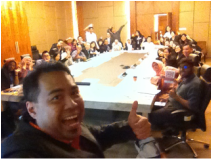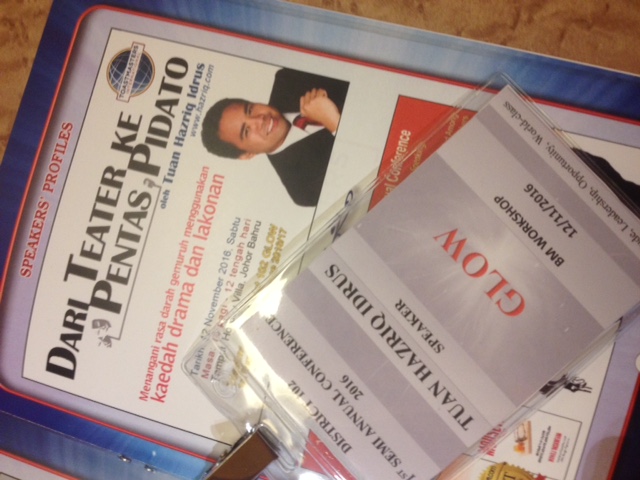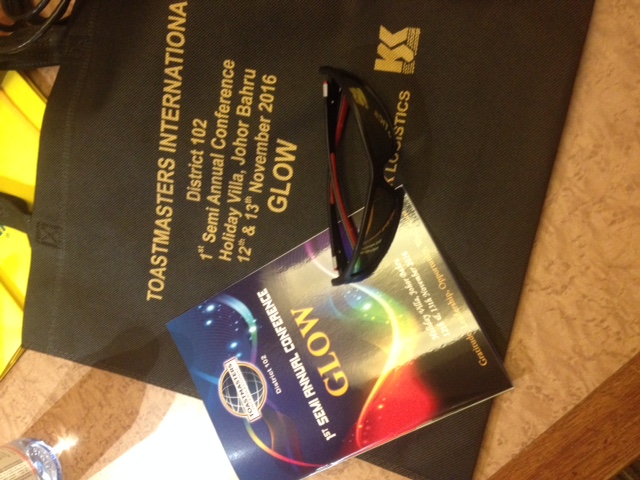|
What do you do if you have spare rooms in your house? Rent it out?
Well, it is possible. How about prisons, if they have spare cells? What do they do? The Netherlands has a record low number of inmates at prisons. As a result, the have many unused cells. http://www.seattletimes.com/nation-world/dutch-get-creative-to-solve-prison-problem-too-many-empty-cells/ WIth that good problem, they got creative and maximised the space; they rented out their prison cells to neighbours Norway and Belgium; turned some into gymnasiums and some were even converted to house families. If you are familiar with creative technique SCAMPER, these are “Substitute”, “Adapt” and “Put to Other Use” in action. Towards your continued success, Hazriq Idrus Business Creativity & Speaking Strategist Author of 4 books, including "The Stage Fright Antidote" Founder, The Speaking Factory Pte Ltd Tel: (65) 6100 2306 Email: hazriq@thespeakingfactory.com Web: www.thespeakingfactory.com Hazriq Idrus is Asia's Trusted Business Creativity and Speaking Strategist. He founded The Speaking Factory Pte Ltd with a mission to empower corporate professionals maximise their potentials and performance at the workplace. Hazriq is also the author of The Stage Fright Antidote and co-authored three other books. If you would like Hazriq to speak at your organisation, or would like to attend Hazriq's executive coaching sessions on presentation skills, please contact (65) 6100 2306 or send an email to info@thespeakingfactory.com to check his availability. 7 Touch Points to Transform Your Next Presentation into a Performance
If you are running a corporate workshop, doing a business presentation, or sharing an information with the audience, it is key for your presentation memorable; only then the audience will find value to your presentation. To be memorable, your presentation needs to bring the audience into a journey of experiences. Here are 7 Touch-points that you might need to take note of so that you can create an experience for your audience in your presentation: 1) Pre-Presentation Ambience Before the audience arrive, pre-set the room with good lighting and play suitable music to create a nice ambience. Think like a 5-star hotel lobby. 2) Start with simple and good ice-breakers Warm the participants with a story or anecdotes. Human loves to listen to stories. Include simple activities that get the whole room to participate. Simple but good (not the ones that sabotages audience!). Let them loosen up. 3) Make Your Presentation Simple and Easy to Follow You may have all the content, but not everything can be digested in one presentation sitting. Do the audience a favour. Prioritise your contents and present the most important ones first. Don't rattle. 4) Use gestures When we speak to our close friends, we use gestures. It is only natural. Use the appropriate gestures when you present. 5) Maximise The Stage If you have the luxury of a large presentaion space, use them to your advantage. Move across the room deliberately as your present. This creates unconscious engagement with the audience. 6) Use humour or play Use humour where appropriate. This will get the audience to laugh and enjoy your presentation. Alternatively, plant activities that require the audience to play. This in itself could be a humour and triggers enjoyment. 7) Rehearse and obtain feedback Some of my contacts shared with me that they can present well without rehearsals and practise. And I would respond with "You can definitely create a more wonderful presentation for your audience when you rehearse." When you rehearse (and get someone to observe and provide feedback), it gives you the opportunity to improve certain areas of your presentations. This is because, feedback is the breakfast of champions. The ultimate results: The audience benefits from your presentation; and you look good as a presenter. Hope this tips help you as you prepare for your next presentation. Remember, don't make your next presentation just like any other presentation. Transform your presentation into a performance. Towards your continued success, Hazriq Idrus Business Creativity & Speaking Strategist Author of 3 books, including "The Stage Fright Antidote" Founder, The Speaking Factory Pte Ltd Tel: (65) 6100 2306 Email: hazriq@thespeakingfactory.com Web: www.thespeakingfactory.com Hazriq Idrus is Asia's Trusted Business Creativity and Speaking Strategist. He founded The Speaking Factory Pte Ltd with a mission to empower corporate professionals maximise their potentials and performance at the workplace. Hazriq is also the author of The Stage Fright Antidote and co-authored three other books. If you would like Hazriq to speak at your organisation, or would like to attend Hazriq's executive coaching sessions on presentation skills, please contact (65) 6100 2306 or send an email to info@thespeakingfactory.com to check his availability. In order to be creative, we need to be in a state of positive mind. The more positive we are, the more easier ideas will flow so we can use them to solve our challenges.
One of the ways to have a positive mindset is to have a habit of complimenting others and make them look good; and do it sincerely, of course! This is because, when we offer someone a compliment (or help, or donation etc), we will have this nice and positive sense of accomplishment. In my creativity workshop, I will have this segment where every delegate is required to choose a partner, then write a letter to compliment or commend each other. After writing their "love letters", and upon receiving the cue, the delegates will move to their partners, exchange the letters and start reading them. Each time when this exercise is done, the outcome is phenomenal. The whole room starts to fill with positive vibes; seeing smiles and laughters. When it's the delegates' turn to share in class on their experiences receiving such letters, some of them really cried; because they have never received such honest and encouraging words from someone else before. The positive words made their day. At this juncture, when we are in a positive and jovial mood, is a good time to brainstorm for ideas. Ideas will just keep flowing. So, when was the last time have you received a bunch of emails, or letters, that consists of compliments from someone? If you have, congratulations! If you haven’t, try writing or sending someone a letter of compliment instead. This positive vibe that you exude, will come back to you (Law of Reciprocity); and most of the time, when you least expect it. Towards your continued success, Hazriq Idrus Business Creativity & Speaking Strategist Author of 3 books, including "The Stage Fright Antidote" Founder, The Speaking Factory Pte Ltd Tel: (65) 6100 2306 Email: hazriq@thespeakingfactory.com Web: www.thespeakingfactory.com Hazriq Idrus is Asia's Trusted Business Creativity and Speaking Strategist. He founded The Speaking Factory Pte Ltd with a mission to empower corporate professionals maximise their potentials and performance at the workplace. Hazriq is also the author of The Stage Fright Antidote and co-authored two other books. If you would like Hazriq to speak at your organisation, or would like to attend Hazriq's executive coaching sessions on presentation skills, please contact (65) 6100 2306 or send an email to info@thespeakingfactory.com to check his availability. I just came back from Johor Bahru, Malaysia a few weeks back to speak a conference (Saturday 12 Nov 2016) for members of the Toastmasters community. Honoured to be invited share excerpts from my book, "The Stage Fright Antidote!". At the conference, I asked the delegates if they "recce" the stage before they take the stage and speak. Only about 20% raised their hands. I recommended the rest of them to do so in their next presentation.
The plus point of doing a "recce" (or in theatre terms, I call it "feel the space"), is to feel relaxed before your presentation and to get comfortable with the presentation area. One of the ways to do that is to familiarise the stage. For presenters and speakers, the stage is the "playground". When we are comfortable with the playground, we will be even more motivated to present and share with the audience. The results of doing that: The audience will see your passion and energy in your presentation. And that will rock the room. If this is not a habit yet, I would recommend you to start doing it. Before your next presentation, come to the venue early. Walk on the stage, cover each inches. If there are steps, use it. Feel the space. Look for obstacles on stage and identify their locations. Also, from where you are on stage, look at the audience' seats, identify if there are angles which you are not able to see the seats; because if you can't see the seats, chances are that person sitting there won't be able to see you too. Keep walking and "feel the space' until you are feeling comfortable with it. Do this action and you will notice that your confidence will shoot up; and your presentation will improve. Hazriq Idrus Author, The Stage Fright Antidote! Founder, The Speaking Factory Pte Ltd ~ Hazriq Idrus is a Business Creativity and Speaking Strategist. He is the author of "The Stage Fright Antidote and co-authored two other books. Hazriq founded The Speaking Factory Pte Ltd with a mission to empower professionals maximise their potentials, performance & productivity at the workplace through his signature high-energy, transformational theatre-based & experiential corporate training programmes. Had just ended the Day 1 of StoryDrive Asia - The Singapore Publishing Symposium at the Arts House. A good event to learn and to rub shoulders with top experts in the industry. One of the session the organiser conducted was the 'speed-dating' where we had chance to meet with potential partners.
Speed-dating is a very good platform for you to widen your network. Here is a 5-Step Business Speed-Dating tips you can apply at this platform (when you are facing 1-to-1): Step 1: Pre-Identify what are your goals (for my case; my top 3 goals would be: (1) to find potential distributors partners, (2) to find potential event/conference planners (so I can work with for future speaking engagements), (3) any other business opportunities that could help bring my business to the next level Step 2: Introduce yourself (prepare your 30 sec elevator pitch). This is where you exchange namecards. Step 3: Offer your help to the other person first. eg " How can I help you meeting your goals/ objectives". If you are not able to meet their objectives, probably you know of someone who could. So, it's still useful. Step 4: After listening their needs, now it's your turn to share with him/ her your needs/ objectives. Step 5: Conclude your conversation, and thank the other person. And remember to drop a follow-up email within 24-48 hours. Hazriq Idrus Author, The Stage Fright Antidote! Founder, The Speaking Factory Pte Ltd ~ Hazriq Idrus is a Business Creativity and Speaking Strategist. He is the author of "The Stage Fright Antidote and co-authored two other books. Hazriq founded The Speaking Factory Pte Ltd with a mission to empower professionals maximise their potentials, performance & productivity at the workplace through his signature high-energy, transformational theatre-based & experiential corporate training programmes. In one of my training workshops recently, I had the opportunity to chat with one of the participants. He was curious as to how "Creativity" can used in Business and Life. He has this mindset that "creativity" is only about being in the "Creative Industries" and doing stuff like painting, sculpturing, stage performances etc.
It was, in fact, a genuine question. He was not alone. True to what most people see, creativity is highly synonymous with the visual and performing arts. While creativity is highly required for that, however, the elements of creativity can be applied in ALL other aspects of life, not just the arts. Like creativity guru, Frederik Haren said, "...there is no such thing as creative industries". Creativity is not just about being in the "creative expression" mode (which I shared in my "Because I'm Introvert" book). We need creativity to live. It is an important skill to have. I call creativity - a form of way of life. Lets look at some of the areas in life as to why there is a need for one to be creative. 1) Creativity solves problems You see, we face with challenges and problems everyday. When face with such adversities, humans have two options - to fight (solve) or to run away. Of course, when we choose to run away, the problems / challenges will "go away" temporarily, but will surface again in future. But if we choose to fight and solve the problems, we might need to know as to how solve them. This is where creativity comes in handy. Creativity is essentially the ability to put two or more different things together to solve a problem. It is also called as Creative-Thinking or Creative Problem Solving. In creative problem solving, the main aim is to address the challenges and solve the problems through a process. Why is there a need for a process? Because that is how our brain is wired. Our brain has been designed to connect things (Will share more on this in one of the ways on how to be creative). For example, I frequently face students turning up late for classes in the polytechnic where I teach weekly . How do we then solve that problem of late-coming? Let's look at another example - you are about to make a presentation but just moments before the presentation starts, there's blackout. How to we respond? Another example; in the current trend, there's a rise in electrical bike accidents. How do we then curb this problem? These are just examples of problems that we need to solve. With creative problem solving, these problems can be easily addressed. 2) Creativity opens doors for career progression and personal development When we are able to solve challenges and problems regularly, that ability will turn into "creativity habits". Our brain will be "re-wired" to think of new ways for ourselves to be better and to move forward. When we embrace that habit, it opens up more doors for career progression and personal development. We start to think along these lines: a) How do we save more and earn more for future? b) How do we avoid repetitive works like data entry; and produce more results? c) How can we spend more quality time with the family? And when we start to think along these lines, it will pave new ways of doing things. It gives a sense of satisfaction and accomplishments. The handphone is a good example of progression. Those were the days when we used dial-up to make calls. Then It progressed into buttons. Then, our favourite "heavy brick-looking-like" handphone. The trend then moved into smaller-built handphone, then moved into smart phones. The trend continues. 3) Creativity encourages positive-thinking, optimism and initiative Creative thinking will transform you from being passive and into a more active role. You will start to feel "responsible" in whatever you are doing and enjoy taking initiatives; thus keep coming up with new ways of doing things. You will then go all out to get them being implemented. In the process, it exudes your positive energy and optimism to get the job done. Failure is not in your dictionary. Famous Bollywood actor Shah Rukh Khan spoke in an interview with NDTV, he shared his late father's advice. His father said, "Success in the worst teacher in the world. It makes you feel invincible but you cannot pass down success to other people....but FAILURE is a fantastic teacher. It teaches you to work harder and be better." Similar thinking went to Thomas Edision, the inventor of light bulb. He said that his light bulb idea was his 10,000th idea. But his earlier 9,999 ideas were not failures, it's just that he found 9999 different ways of NOT inventing a light bulb. In fact, he patented some of his 9,999 ideas. In soccer, there's a famous saying by the Brazilians, "England invented the soccer, but we PERFECTED it." Because the Brazilians are so passionate and optimism, they found new ways to create and perfect the art of playing soccer (think "Samba"), they are one of the successful nations in that sport. How about you? Do you find other reasons and the needs to be creative? Towards your continued success, Hazriq Idrus Author, The Stage Fright Antidote! Founder, The Speaking Factory Pte Ltd ~ Hazriq Idrus is a Business Creativity and Speaking Strategist. He is the author of "The Stage Fright Antidote and co-authored two other books. Hazriq founded The Speaking Factory Pte Ltd with a mission to empower operational leaders and line-managers in achieving professional and organisational excellence through his signature high-energy, transformational theatre-based & experiential corporate training programmes. To be highly skilled in any areas that you do, you need to invest your time in learning. However, learning is not just about attending courses or reading. Based on the learning & development model and research done by Michael M. Lombardo and Robert W. Eichinger, that makes up of only 10% (or 1 of the 3 elements of the model) of the overall learning experiences to meet your true potential mark.
To obtain and maximise your learning experiences so that you can develop a mastery on a particular skill (or skills), Michael and Robert recommended the following, which I have summarised and synthesized below: 1) 2nd Element: Devote 70% learning time by applying the skills and go through the experience itself. For example, if you want to master your presentation skills, keep presenting. When things go wrong, refine and continue presenting. You'll get better each time. 2) 3rd Element: Allocate 20% learning time to obtain feedback from mentors and coaches. If you want to improve on your presentation skills, work with presentation mentors and coaches. These people have gone through the experiences earlier than you and could offer sound advice for you. You can learn from their life experiences and expedite your learning process instead of going through a steep learning curve. Why re-invent the wheel. If any of these learning elements are missing, you'll miss out on reaching your 100% true potential. Hazriq Idrus Author, The Stage Fright Antidote! Founder, The Speaking Factory Pte Ltd ~ Hazriq Idrus is a Business Creativity and Speaking Strategist. He founded The Speaking Factory Pte Ltd with a mission to empower operational and middle-management leaders in achieving professional and organisational excellence through his signature high-energy, transformational theatre-based & experiential corporate training programmes  "Feedback is the Breakfast of Champions!" Have you heard this phrase before? This phrase was coined by leadership & management expert, Ken Blanchard. And it does make a lot of sense. As an employee or a business owner, as a team player or a team leader, everyone needs to improve to move forward. One of the fastest ways to improve and be the Champions in your field - whether on your skills set, management or communication styles - is to seek constant feedback; and act on it accordingly. Through feedback from others, we can look into our 'blind-spots' which are usually overlooked. These blind-spots could make a difference in our lives. For example, if you are having an upcoming presentation at your next department meeting, seek someone's help to offer their feedback and advice on how to improve on your presentations. With that feedback, you would bring a different perspective in your presentation that could help you get promoted! Similarly, when working in a team, there is a need to constantly exchange feedback within the team members to improve the team's outcome and deliverables. One of the common questions I always receive is "What if the Leader is the one who needs to improve so he/she can lead the team better?" According to Michael Podolinksky, Singapore's Productivity Guru, whom I had the opportunity to work with some years ago, shared that, as a team-player, it is equally important for a staff to offer feedback to the boss. I call it a 'disservice' to ourselves and to the team if we do not offer our feedback to the leader to improve, much for the benefits of the team. A lot of people will find it difficult to convey this message to the team leader, but afterall the team leader is still a human. When you are planning to offer your feedback to your team leader, it is best if you could offer it privately, away from other colleagues. Make an appointment with your leader and have the session over coffee. Make the meeting informal. When offering the feedback, one method is to use the "Hamburger Method". There are 3 Steps to it this method: 1st Step: The Top Loaf - Extract and share positive outcomes that your leader had exuded that had helped the team in one way or another. 2nd Step: The Meat - This is where you go straight to the areas for improvement. Share 2 or 3 things that you feel your bosses are not doing right. Offer your suggestions to improve. 3rd Step: The Bottom Loaf - End the sharing with another positive outcome that you know about your leader. If he/she is a good leader, he/she would listen and improve. However, whether or not your leader will take in and respond, it is up to him/ her. But you have done your part as a team player. You will be respected for offering your honest opinions for the sake of the team. When I was working in the corporate organisation previously, I was fortunate that my bosses constantly asked for feedback to improve on their working and management styles. I used this 'Hamburger' method when I shared my feedback. It worked for me. How about you? Does this method work for you? Here's to your continued success! Hazriq Idrus Author of "The Stage Fright Antidote!" + 2 other books Founder, The Speaking Factory Pte Ltd ~ Hazriq Idrus is a Business Creativity and Speaking Strategist. He founded The Speaking Factory Pte Ltd with a mission to empower operational and middle-management leaders in achieving professional and organisational excellence through his signature high-energy, transformational theatre-based & experiential corporate training programmes.  Not enough time to prepare for your presentations? Remember these 3 H.O.T Tips that you must have as you prepare your presentations. 1) Hook If you start the session by saying, "Hi, I am <your name> from <your dept/ company>, it appears normal and boring. So, change the style. Engage the audience right from the start. Hook them. One way to hook them is to ask and get their response: An example: Ask them to answer this question by raising their hands: "Who believes that public speaking is an important skill to have?" We can easily get their responses and engage them at the same time. 2) Odd-numbered Topics Break your topics into three parts (or odd numbers). This is because human brains are designed to remember odd numbers easily. 3) The Call-to-Action At the end of the presentation, always include your call-to-action, so that the audience will know what to do next. It could be the next date of your meeting, deadlines for them to meet etc. Apply these three tips and your audience will appreciate you. Towards your continued success, Hazriq Idrus Business Creativity & Speaking Strategist Author of 3 books, including "The Stage Fright Antidote" Founder, The Speaking Factory Pte Ltd Hazriq Idrus is Asia's Dynamic Business Creativity and Speaking Strategist. He is the author of The Stage Fright Antidote and co-authored two other books. Hazriq founded The Speaking Factory with a mission is to empower professionals with High-Energy transformational training for professional and organisational growth. If you would like Hazriq to speak at your organisation, or work with you in training & coaching, contact him at info@thespeakingfactory.com. One of the common conversation topics on presentation that I encounter is that employees feel that they are not having enough confident to present. Especially in a meeting where there are bosses and top management staff sitting in.
I would then ask them, "Did you rehearse your presentations?" The answer is common: No or not much. You see, whether in SEA Games, Asian Games or Olympic Games, when race starts, the 100-metre athletes take their stride, race with confidence and win that elusive medal; much to their joy. Similarly for actors doing live performances, the moment the curtains open, they put up convincing performances that delight the audience; and sometimes receiving standing ovations. So what makes them be good at their crafts? The answer is, practice. Athletes will train every day building up their muscle and in the process, build up their confidence to face other athletes in the competition. Of course, some may win, others may not, but for sure, they are so much better than when they first started training. For actors, rehearsals started 4-5 months in advance prior to their first matinee or premiere. In the process, the actors gain confidence to play the characters convincingly. Similarly, there is a need to rehearse your presentation; even if it is a mere 5-minutes! Constant rehearsals will help to make your delivery "second nature", thus making you look good presenting. Never underestimate the power of rehearsals. So how to rehearse? I would suggest 3 parts to this: Part One: Once you have your scripts or slides done, go stand up and rehearse. Don't just stand, move. Use gestures where appropriate. Do this a few times until you feel "second nature". Part Two: Gather a few of your close friends and make them your audience. Let them watch your presentation. Appoint some of them to be the devil's advocate, asking you tough questions, so that you can be prepared for such situations at the actual presentation site. Part Three: Just moments before the actual presentation, do a visualisation exercise. This is a powerful way to gain confidence. Find a corner or place, close your eyes and recall the rehearsals that you have done - mentally. Once done, take a deep breath, smile, and walk your way into the meeting room (or your presentation venue). When is your next presentation? Have you rehearsed? Towards your speaking success! Yours sincerely, Hazriq Idrus Speaking & Creativity Strategist Founder, The Speaking Factory Pte Ltd Author, The Stage Fright Antidote! |
From the EditorThe Speaking Factory is dedicated to help leaders and their teams unlock their potentials so they can connect, communicate and co-create effectively. Articles by Categories
All
|







